The Year: 1639
Lady Deborah Moody was christened Deborah Dunch in London in 1586. She came from a wealthy family with both political and religious connections, but also one that believed strongly in civil liberties and religious non-conformity. Deborah married Henry Moody, a well-connected landholder. He was later given knighthood, and she became Lady Deborah. In 1629, Henry passed away, when she was approximately 33.
Image: Map showing Long Island and New Amsterdam, later renamed New York
At this time, England was in great religious turmoil, and Lady Deborah was very attracted to Anabaptism, a Protestant sect that believed that baptism should be received by adult believers, but not children.
Unable to live in the oppressive religious climate in England, she and her son and a party of Anabaptists emigrated to New England in 1639. They met with a cold reception from the Puritans who controlled the region.
Lady Deborah was well acquainted with John Winthrop, Sr. (governor of Massachusetts Bay Colony) and had been a good friend of his son John Winthrop, Jr. (governor of Connecticut) in England. She soon discovered that Massachusetts Bay Colony was one of the most intolerant communities in the New World. She was admonished by the Puritan church for her Anabaptist beliefs.
In July 1643, John Winthrop wrote in his journal:
The Lady Moody, a wise and anciently religious woman, being taken with error of denying baptism to infants, was dealt withal by many of the elders and others, and admonished by the Church of Salem (where she was a member), but persisting still, and to avoid further trouble, etc., she removed to the Dutch against the advice of her friends. Many others, infected with Anabaptism, removed thither also. She was after excommunicated. With the exception of her troubling the church with her religious opinions, she appears to have been a lady of great worth.
Lady Moody organized a party to settle a new community at the Dutch Colony of New Netherland. She and her followers moved to Long Island in 1643. In October of that year, the settlers were driven off by the Indians and found refuge at the Dutch fort at New Amersfoort, which was later named Flatlands.
A New Settlement
On December 19, 1645, Dutch Governor Kieft granted Lady Moody land in the south of what is now Brooklyn. She founded the town of Gravesend, and became the first woman in the New World to receive a land patent and to write a town charter in English in New Amsterdam.
Gravesend was one of the first towns with a square block plan in the New World. Starting with a stockaded town square, Lady Deborah based the design of Gravesend on Kent, England. The town was divided into 28 parts, each to receive a plantation lot and a village lot.
The town was made up of two main roadways that bisected the town from the north-south and east-west side. Alongside the roads were four squares that were made up of four acres each. Inside each of the four sections were ten houses with a one-acre commons for the people. Outside of town there were triangle pieces that made up hundred acre farms. These farms where known as boweries that poked out from the center of town, making it look like the spokes from a wheel.
Lady Moody founded a town hall government, started a school, and established a church. Gravesend’s policy of religious freedom set it apart from most colonial settlements. As the only English town in Brooklyn, Gravesend quickly developed an air of self-sufficiency from the five neighboring Dutch towns.
In 1646, a new division was made, laying out the town into forty lots. According to surviving records, Lady Moody had two plantations and two town plots. Gravesend Avenue (renamed McDonald Avenue in 1933) ran from the heart of town to the City of Brooklyn, providing residents of Gravesend with a route for trade and travel throughout Kings County.
Entitled to vote by virtue of the land grant, she became the first woman to exercise the right to vote. Her substantial holdings, unheard of for a woman, extended along what is now Brooklyn’s Atlantic shore, and included Coney Island, Bensonhurst, Sheepshead Bay, and Midwood.
A Noble Mind
Lady Moody was a woman with a strong mind. When the Colonists revolted against those they were indebted to for their religious freedom and for the use of their lands, she stood against her own neighbors and friends, because they were in the wrong. In the process, she won the friendship of New Amsterdam Governor Peter Stuyvesant and his admiration, and yet retained the love of her colonists.
In 1652 war broke out across the Atlantic Ocean between the English and the Dutch, which increased the tension between the Dutch rulers and the English towns in western Long Island. That was aggravated in 1657, when the first Quakers came to New Netherland. In one of her last acts of defiance, Lady Moody invited them to Gravesend, and the first Quaker meeting in the colonies was held in her house.
Lady Deborah Dunch Moody died in 1659, at the age of 73.
For 200 years after her death, the town remained largely rural. Towards the end of the 19th century, Dutch and German farmers joined the established English population, and, in 1894, Gravesend was incorporated into the City of Brooklyn.
Lady Moody Triangle in Brooklyn, formed by Village Road North, Lake Street, and Avenue U, contains a yardarm flagpole at its point, with a granite plinth and bronze plaque dedicated to the neighborhood’s World War II casualties. In the center of the triangle stands a large granite memorial for Gravesend Veterans. On the north side is an engraving of an American Bald Eagle perched on a stone. The opposite side briefly explains the history of Gravesend.
The inscription on a nearby marker reads:
GRAVESEND
Settled in 1643 by English
Quakers under Lady Deborah
Moody on land granted to
Them by the Dutch
Governor of New Amsterdam
In 1999, Mayor Rudy Giuliani funded a $23,850 renovation of the site, which provided new paving and added a planting area, lined with Belgian paving stones. The new green area, which contains Oakleaf Hydrangea, Inkberry, and Creeping Euonymus, complements the triangle’s six mature London Planetrees.
SOURCES
Lady Deborah Moody
Lady Moody Triangle
Lady Deborah Moody’s House
Dangerous Woman: Lady Deborah Moody
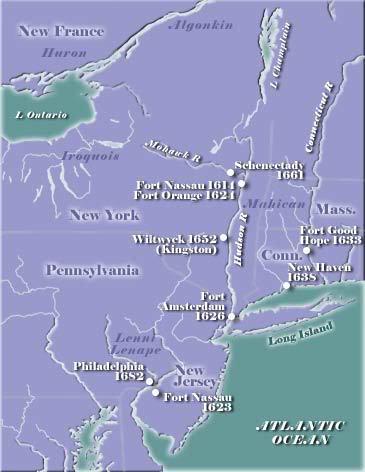
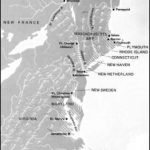
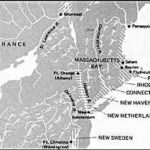
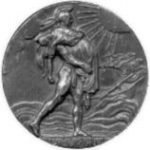
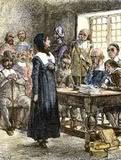
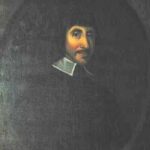
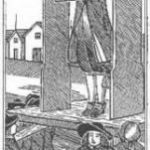
Hello, I’m afraid you have the date Lady Deborah Moody’s departure from Massachusetts wrong. She, James Hubbard and others left in 1642.
Hello. I am trying to find out more about the the people who left Lynn with Deborah Moody. Can you provide me with some info on your sources. For example I had not heard of Hubbard until I saw this post. My email is [email protected]
Thank you.